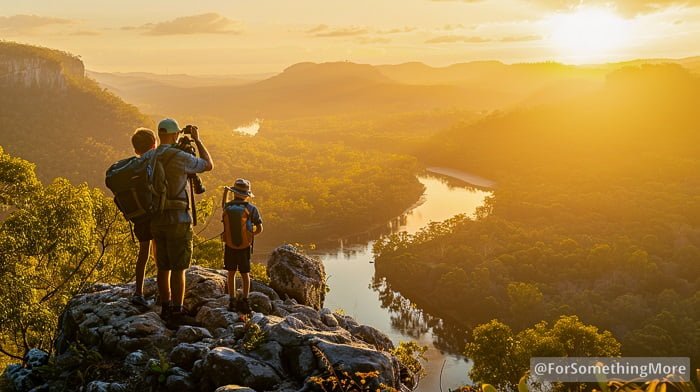Travel photography offers a unique opportunity to capture the beauty of different places, cultures, and moments that make each journey unforgettable. Whether you’re wandering through bustling city streets, exploring remote landscapes, or capturing local traditions, being able to take stunning photos is a skill every traveller can benefit from.
In this article, we will explore essential tips for mastering travel photography, including choosing the best cameras for travel photography, composition techniques, and practical advice for shooting on the go. Whether you’re a beginner or a seasoned photographer, these insights will help you capture the essence of your travels.
- Choosing the Best Camera for Travel Photography
The foundation of excellent travel photography begins with choosing the right camera. The ideal travel camera balances portability, image quality, and ease of use. Here are some key factors to consider when selecting the best cameras for travel photography:
- Portability and Size
Travelling often means long hours, so bulky cameras can become cumbersome. Opt for a compact, lightweight camera that doesn’t sacrifice image quality. Mirrorless cameras and advanced point-and-shoot models are excellent options for travellers who want professional-level results without lugging around a heavy DSLR.
- Versatility and Lens Options
A great travel camera should be versatile enough to capture many scenes, from sweeping landscapes to close-up portraits. Many travel photographers prefer cameras with interchangeable lenses, allowing them to switch between wide-angle, telephoto, and prime lenses as needed. However, if you choose a more straightforward setup, a camera with a high-quality zoom lens can cover most shooting scenarios without the need to change lenses.
- Durability and Weather Resistance
When travelling, you’ll often encounter diverse environments—rainy cities, sandy beaches, or even humid jungles. Choosing a camera with weather-sealed features can protect your gear from the elements, ensuring that your camera lasts for the duration of your trip. Additionally, investing in a protective case or camera bag is essential for keeping your gear safe while on the go.
- Camera Recommendations
If you’re looking for the best cameras for travel photography, here are a few top-rated options:
- Sony Alpha a7C is a lightweight, full-frame mirrorless camera with impressive image quality and excellent autofocus capabilities.
- Fujifilm X-T30: A compact and versatile mirrorless camera that excels in various lighting conditions and offers excellent colour rendering.
- Canon PowerShot G7 X Mark III: A powerful compact camera with a large sensor, perfect for those who want professional results in a pocket-friendly size.
- Olympus OM-D E-M5 Mark III: Known for its portability and weather-sealed body, making it ideal for travel.
- Mastering Composition: Key Techniques for Stunning Travel Photos
While having the right gear is essential, excellent travel photography ultimately depends on your ability to compose an image that tells a story. Here are some indispensable composition techniques that can help you capture stunning moments during your travels:
- Rule of Thirds
The rule of thirds is one of the most fundamental principles of composition in photography. To apply it, imagine dividing your frame into nine equal parts using two horizontal and two vertical lines. The critical elements of your photo should be positioned along these lines or at their intersections, creating a balanced and visually appealing image. This technique can be beneficial when photographing landscapes or cityscapes.
- Leading Lines
Leading lines are natural or artificial elements within a photo that guide the viewer’s eye toward a focal point. Roads, rivers, fences, and architectural elements can all act as leading lines, helping to create a sense of depth and direction in your images. Use this technique to draw attention to important subjects in your travel photos, such as a majestic mountain peak or a bustling market.
- Framing
Framing involves using objects within the scene to surround your subject, creating a “frame” that draws focus to the central element of the photo. Trees, doorways, windows, or even natural rock formations can be used for framing. Framing adds depth and context to your images, making them more engaging.
- Capture Movement and Action
Travel is about experiencing new places and cultures; capturing motion can add a dynamic element to your photos. Whether it’s a waterfall’s flow, the local market’s bustle, or a person walking down a street, incorporating movement can tell a more vibrant story. To do this effectively, experiment with your camera’s shutter speed—slower shutter speeds create motion blur, while faster speeds freeze the action.
- Practical Tips for Travel Photography
Beyond mastering camera settings and composition techniques, there are practical considerations to remember when shooting on the go. Travel photography often requires adaptability, quick thinking, and a few logistical preparations.
- Plan but Stay Flexible
Researching your destination ahead of time can help you identify iconic spots or hidden gems to photograph. Look for unique vantage points, landmarks, and the best times of day for natural lighting. However, travel can be unpredictable, so stay flexible and ready to capture spontaneous moments. Some of the most memorable photos come from unplanned encounters or unexpected discoveries of a new scene.
- Consider Lighting Conditions
Natural light plays a critical role in photography, and understanding how to use it can dramatically improve your travel photos. The “golden hour,” which occurs shortly after sunrise and just before sunset, provides soft, warm light perfect for creating stunning, well-lit images. On the other hand, the midday sun can produce harsh shadows—if you must shoot during this time, look for shaded areas or adjust your camera’s settings to compensate.
- Pack Light, But Be Prepared
When travelling, it is essential to find the right balance between carrying enough gear to cover various shooting situations and packing light enough to avoid being weighed down. Bring essential items like extra batteries, memory cards, and lens cleaning cloths. Depending on your destination, a small tripod or a portable gimbal might be worth bringing to stabilise your shots.
If you’re looking for a great travel camera that is easy to carry and packs powerful features, consider models like the Sony RX100 VII or the Panasonic Lumix LX100 II. Both are compact and perfect for capturing high-quality images without taking up too much space in your luggage.
- Interact with Locals
Travel photography isn’t just about landscapes and landmarks—it’s also about capturing the culture and people of the places you visit. Engaging with locals can provide incredible opportunities for portraits or street photography. Always ask for permission before taking someone’s photo, and respect cultural sensitivities.
- Backup Your Photos Regularly
Losing your travel photos can be devastating, so it’s essential to have a backup plan in place. Consider carrying an external hard drive or uploading your pictures to cloud storage at the end of each day. This way, your images will still be safe if anything happens to your camera or memory cards.
- Enhancing Your Photos with Post-Processing
Post-processing is essential to modern photography, allowing you to enhance your images and bring out their full potential. While it’s always best to get your shots close to perfect in-camera, editing software like Adobe Lightroom or Photoshop can help you adjust to exposure, contrast, saturation, and more.
For travel photography, subtle adjustments can help bring out the vibrant colours of a sunset, enhance the texture of a landscape, or balance the exposure in a high-contrast scene. Just be sure to keep your photos manageable, as natural beauty should remain the focus of your work.
Conclusion: Capturing the World Through Travel Photography
Mastering travel photography requires a mix of technical skills, creativity, and adaptability. Whether you’re using a high-end DSLR, a great travel camera, or simply your smartphone, the key is to be ready to capture the world around you. By choosing the best cameras for travel photography, applying tried-and-true composition techniques, and being prepared for various shooting conditions, you can create stunning visual stories that reflect the beauty of your adventures.
As you plan your next journey, remember that every moment offers an opportunity to capture something extraordinary. Happy shooting!



